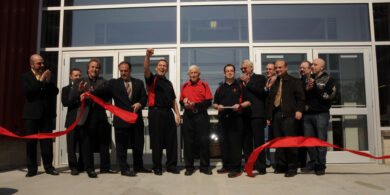Jan. 22, 2007: Focus on prospects, not just sales customers
The U.S. motorcycle industry is all about fun, freedom and a completely discretionary purchase. So why doesn’t a customer’s motorcycle-buying experience reflect the fact that the dealership needs the customer far more than the customer needs the motorcycle?
Why does it often seem like other businesses value our patronage much more than the typical motorcycle dealership values it? Think of your buying experience at Starbucks, Nordstrom, Fry’s Electronics, In-N-Out Burger, Disney, Blockbuster or Subway.
But, you say, we know our customers, and treat them well. That may be true, and repeat customers are at the core of nearly any successful business. But what about your future customers? Let’s call them “prospects.” They’re the ones who visit, but don’t make a purchase at your dealership.
Many dealerships are so focused on customers who buy that they neglect the customers who have not yet bought.
What’s the problem? Let’s call it a problem of alignment, or more accurately, misalignment. Give an owner a chance to interact with a prospect, and the owner’s goal is for the prospect to buy. But if they aren’t going to buy today, the owner wants them to leave as a fan of the store, understanding that they will be back, and that they also will tell their friends about the store.
On the other hand, what is a salesperson’s attitude toward someone who is “just looking around?” Many times the salesperson sizes up the prospect to determine whether they will generate a commission to help the salesperson make next month’s rent payment. If not, then the salesperson begins looking for another prospect who will.
It’s a case of misalignment between the goals and attitudes of an owner and the goals and attitudes of a salesperson.
Improving Prospect Satisfaction
Most of you already embrace the importance of driving showroom traffic through advertising or events. Many of you even measure “ups,” and then calculate closing ratios to see how effective your sales staff is in selling to prospects who walk through the door. It’s just as important to understand what happens in between the time when the prospect walks through the door and the time when they decide whether to buy or not to buy, or whether to visit your dealership again or whether to recommend your dealership to their friends.
To maximize prospect satisfaction, measure it through an ongoing mystery shopping program, (you’ve heard the saying, “If you measure it, it will change”), or at least by monitoring how your dealership treats first-time shoppers. Make sure your dealership has a formal system in place to greet and follow up with every customer who walks through the door. If you do not, some prospects will fall through the cracks because no one will take responsibility for them.
Recognize the job of everyone at your dealership is to make each prospect feel like they are the most important person to walk through the doors that day. Copy the luxury hotel chains, such as Ritz-Carlton or Four Seasons, by implementing a 10/50 rule: If an employee walks within 10 feet of a customer — any customer — greet them. And if an employee walks within 50 feet of a customer, look and smile at them, giving them a chance to summon your help if they need it. Does it matter if your role at the dealership is the owner, or someone who sweeps the floor? Not one bit. At Disney World the people who carry the brooms and dustpans are trained first and foremost in answering questions and helping patrons of the park.
What’s At Stake
So what’s most important for turning a prospect into a customer? Without question it’s your sales process. Do your salespeople automatically gather contact information and then follow up after a prospect visits? Do they remember to give prospects reasons to buy from this dealership rather than another one? Do they always remember to mention financing or service contracts, or the availability of accessories? Do they always ask for the sale? Many do not. The only way we have found to encourage a sales team to consistently follow a prescribed sales process is to continually measure how prospects are being treated by the sales team.
How much improvement is possible? One motor vehicle brand found only 21 percent of their dealerships hit their nationwide prospect satisfaction target of 92 percent. After one year of measuring prospect satisfaction, posting the results and rewarding superior salesperson scores, 60 percent of their dealerships consistently hit the 92 percent target. There are plenty of other examples, too.
Typically, fewer than 40 percent of salespeople provide prospects with compelling reasons for doing business with their dealership — instead they sell only the product. For specific dealerships, we have seen that percentage climb to nearly 100 percent after implementation of mystery shopping to drive up prospect satisfaction.
With a focus on driving not just customer satisfaction, but also prospect satisfaction, hopefully in the future we will hear motorcycle dealerships and motorcycle brands mentioned as examples of a superior buying experience. We will then acknowledge that U.S. motorcycle buyers really don’t need a motorcycle anymore than coffee buyers need a $4 cup of coffee. But with the right approach, we will attract and sell to even more motorcycle prospects, not just because of the products, but also because of the buying experience. psb
Fran O’Hagan is president of Pied Piper Management Company LLC, a California-based company that runs mystery shopping programs for motor vehicle clients. O’Hagan is also a longtime motorcycling enthusiast.




